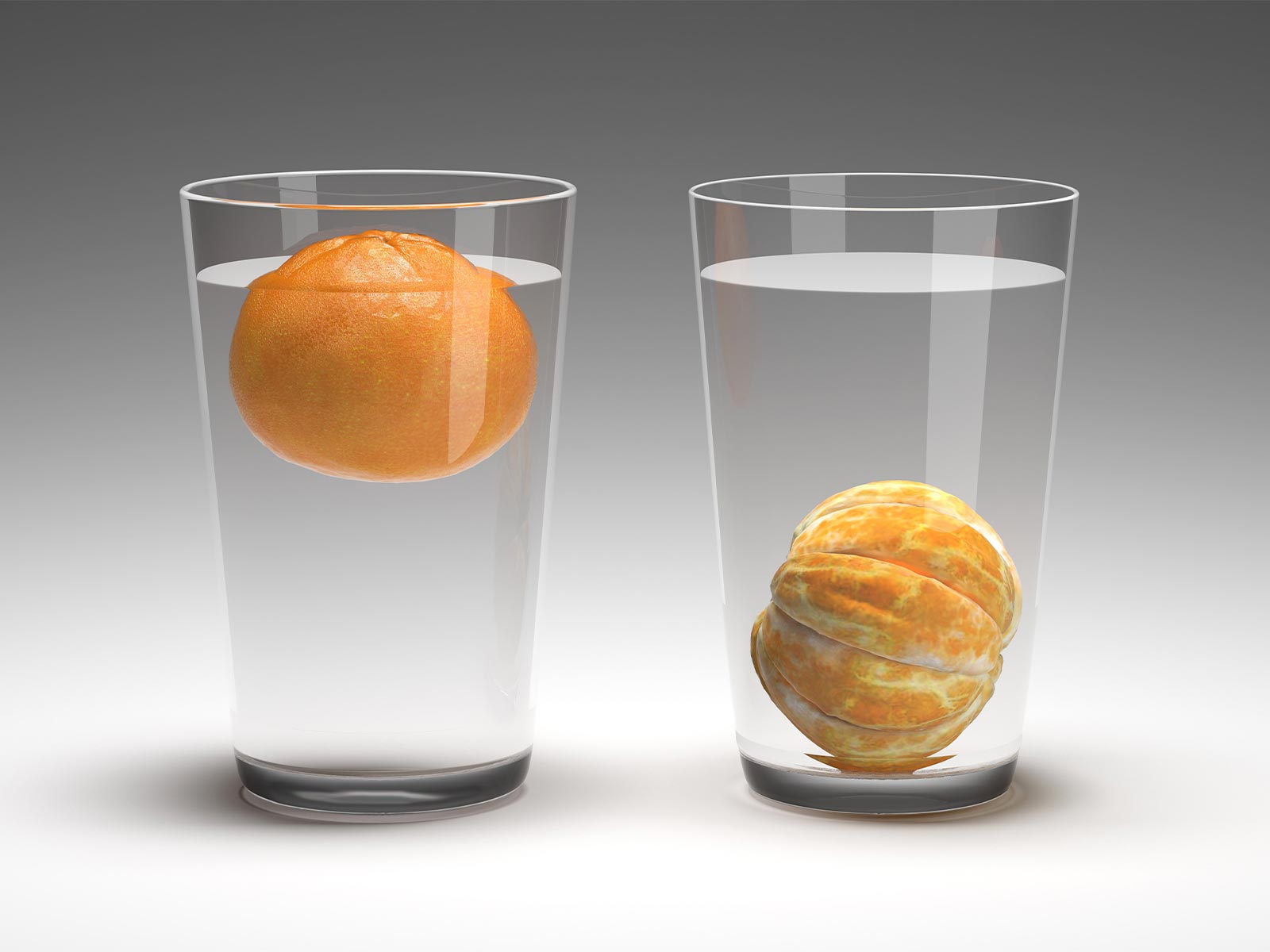Buoyancy is the tendency of an object to float in fluids because of the upward force that fluids exert on objects. Experimenting with objects to determine what will float and what will sink is always fun! This a quick experiment that will only take a few minutes to perform and offers the added bonus of snacking on the oranges while you discuss the outcome!

Supplies Needed:
- 2 Oranges
- 2 Glasses or Containers (Note: They must be big enough to put an orange into.)
- Water
What to do:
- Fill each of your glasses ¾ of the way with water. (Remember: They must be big enough to put an orange into.)
- Slowly and carefully place an orange in one of the containers. What happens to the orange? Does it float or does it sink?
- Next, remove the peel from the second orange.
- Slowly and carefully place the peeled orange in the second container. What happens to this orange? Does it float or sink?
Scientists Ask Questions:
Do you know the why the heavier whole orange floated, and the lighter peeled orange sank?
How it Works:
An orange with a peel is heavier than an orange without a peel. So why does the orange with the peel (the heavier one) float and the orange with the peel (the lighter one) sink?
The secret to this experiment is density! Density is a measure of the mass per unit volume of a substance. The oranges with the peel attached are less dense than water. This is because the peel acts like a flotation device. The peel is porous and filled with tiny air pockets. These pockets of air help increase the buoyancy of the orange. This increase in buoyancy helps the orange become less dense than the water, so the orange will float in the water.
On the other hand, when you remove the peel from the orange, even though you are making it lighter, you are also removing those tiny air pocket floatation devices. Therefore, the orange without the peel is denser than water and it sinks!
